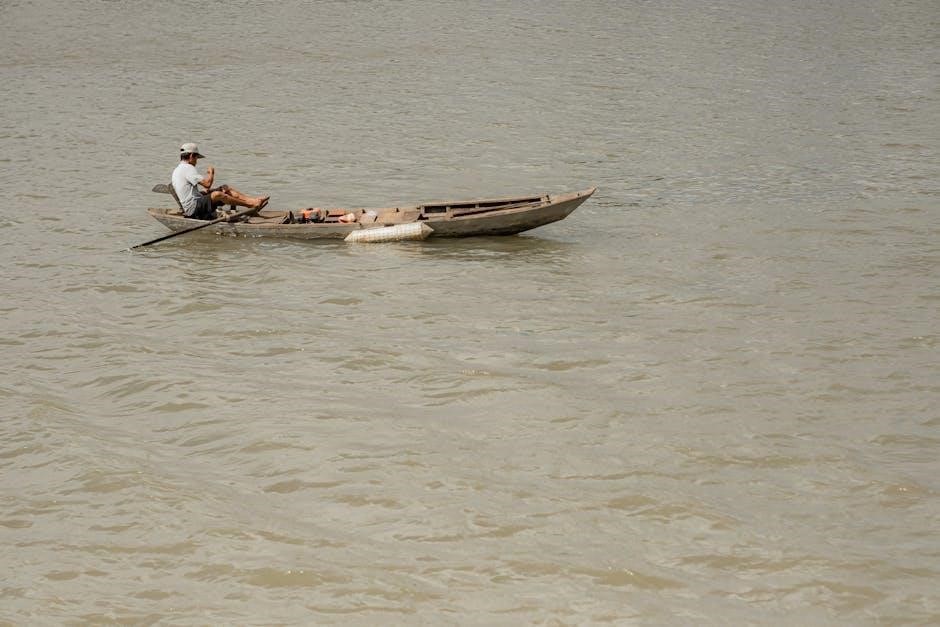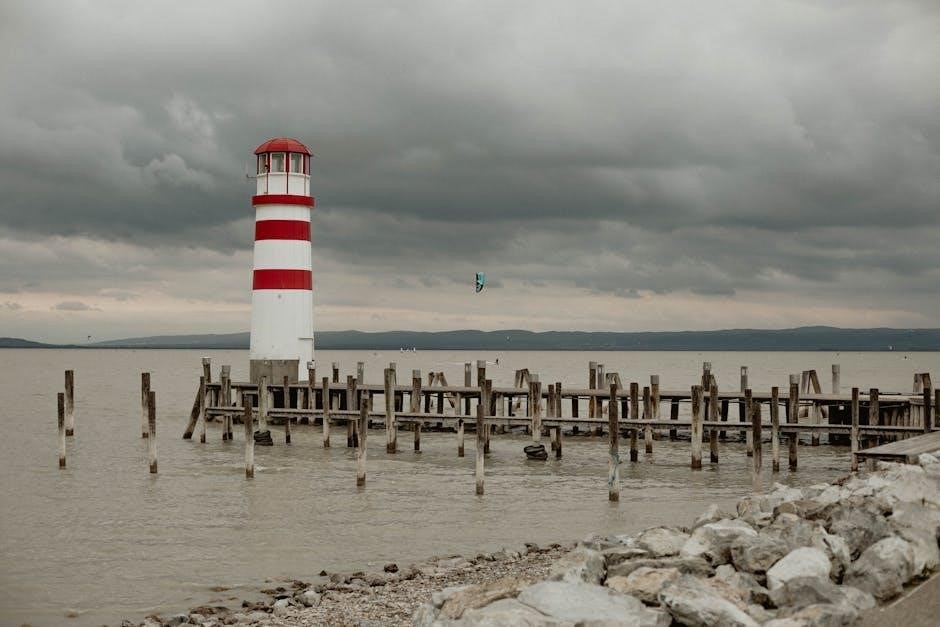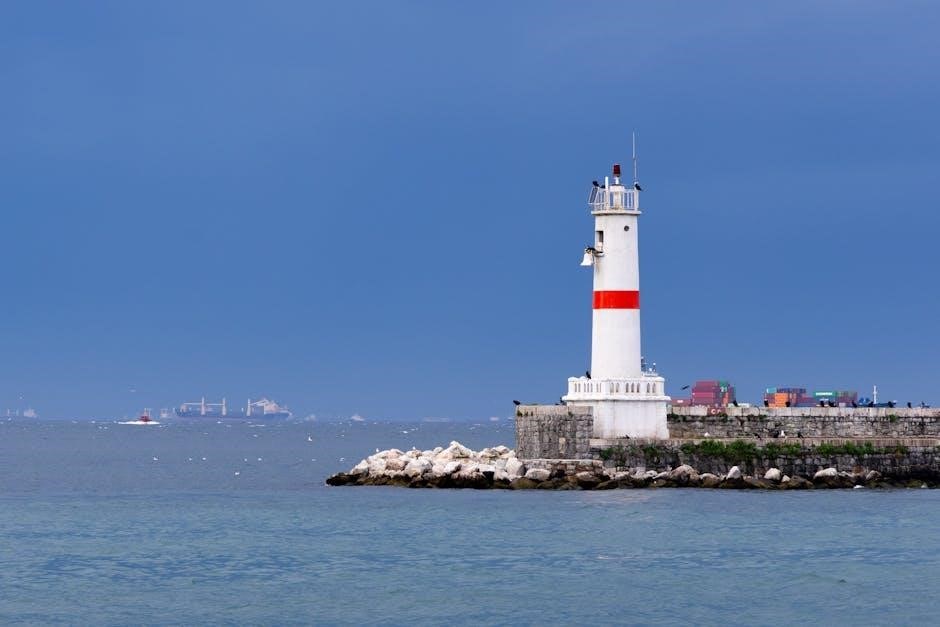how much to tip fishing guide
Tipping fishing guides is a customary practice to show appreciation for their expertise and service; The standard tip ranges from 15-20% of the total trip cost, reflecting satisfaction with the experience.
Factors Influencing the Tip Amount
Tip amounts for fishing guides are influenced by service quality, charter duration, and location costs. Exceptional service warrants higher tips, while poor service may reduce them.
2.1. Duration of the Charter
The duration of the charter significantly impacts the tip amount. Shorter trips, like half-day charters, often receive a standard 15-20% tip. Longer trips may see slightly higher percentages due to increased effort from the crew. Multi-day charters might require additional considerations for extended services provided. The captain and crew’s time investment directly correlates with the tip, ensuring their hard work over extended periods is appropriately acknowledged.
2.2. Quality of Service Provided
The quality of service is a key factor in determining the tip. Exceptional service, such as the crew going above and beyond to ensure a successful trip, warrants a higher tip, typically 20-25%. Conversely, if the service is subpar, tipping below 15% may be appropriate. The crew’s attentiveness, expertise, and effort in meeting expectations directly influence the gratuity, making it a reflection of their performance and the overall experience they provide.
2.3. Location and Cost of the Charter
The location and cost of the charter significantly influence tipping amounts. In premium destinations like Alaska or Hawaii, where charters are more expensive, tips tend to be higher, often reaching 20-25%. For more affordable charters, 15-20% is standard. These factors help determine a fair tip, ensuring it aligns with the charter’s overall expense and regional norms.

Standard Tipping Rates for Fishing Guides
Standard tipping rates for fishing guides typically range from 15-20% of the total charter cost. This percentage is widely accepted and reflects the quality of service received.
3.1. Percentage-Based Tipping (15-20% of Total Cost)
Percentage-based tipping is the most common method, with 15-20% of the total charter cost being standard. This approach ensures the tip reflects the overall experience and service quality. For example, a $500 charter would typically result in a $75 to $100 tip. This method is fair and aligns with industry standards, making it easier for clients to determine an appropriate amount based on their satisfaction.
3.2. Flat Rate Tipping (Per Person or Per Day)
Flat rate tipping offers an alternative to percentage-based tipping, often set at $50 to $100 per person or per day. This method simplifies calculations, especially for group charters. It ensures each participant contributes fairly, regardless of the total cost. For instance, a half-day charter might see a flat rate of $75 per person, while a full-day could be $100 to $150. This approach is practical and straightforward, making it a popular choice for many anglers.
How to Calculate the Tip
To calculate the tip, use the total trip cost or per person rates. Apply 15-20% for percentage-based tips or opt for flat rates like $50-$100 per person/day.
4.1. Calculating Based on Total Trip Cost
Calculating the tip based on the total trip cost involves applying a percentage to the overall fee. A common range is 15-20% of the total cost. For example, if the charter costs $1,000, a 15% tip would be $150, while 20% would be $200. This method is straightforward and ensures the tip reflects the overall experience. It’s a standard approach, as guides rely on tips to supplement their income. Adjust the percentage based on service quality and satisfaction.
4.2. Calculating Based on Per Person Contributions
Calculating the tip per person involves dividing the total tip amount by the number of participants. For example, if the total tip is $200 for a group of four, each person contributes $50. This method ensures fairness and shared responsibility. It’s common for groups to split the tip equally, especially when the charter cost is shared. Always consider rounding up for simplicity and fairness, ensuring the guide feels appreciated for their efforts. Adjustments can be made based on individual satisfaction.
Tipping Etiquette for Fishing Charters
Tipping is customary and appreciated, typically 15-20% of the total cost. Cash is preferred, often handed to the captain to distribute fairly among the crew. Tips reflect service quality and effort.
5.1. When to Tip (End of the Trip)
Tipping is typically done at the end of the fishing charter, after all services are provided. This allows you to assess the overall experience and service quality. Handing the tip directly to the captain or guide is standard, ensuring they receive your appreciation. Cash is the preferred method, and presenting it discreetly is considered polite. Timing the tip at the trip’s conclusion shows gratitude for their efforts and enhances the positive experience.
5.2. How to Present the Tip (Cash or Other Methods)
Cash is the preferred method for tipping fishing guides, as it ensures the crew directly receives your appreciation. If cash isn’t convenient, some charters accept credit cards or digital payments. Hand the tip to the captain or guide personally, as this is considered polite and respectful. For larger groups, placing the tip in an envelope labeled for the crew is a thoughtful gesture. This approach ensures fairness and shows gratitude for their hard work and dedication.
Special Cases for Tipping
Adjust tips for exceptional or poor service. Exceptional service may warrant 20-25%, while subpar experiences might receive less than 15%. Tailor tips to reflect the crew’s performance.
6.1. Exceptional Service (20-25% Tip)
Exceptional service, where the crew surpasses expectations, merits a 20-25% tip. This reflects their dedication, effort, and commitment to ensuring an outstanding experience. Crews that go above and beyond, such as providing additional services or ensuring a memorable trip, deserve higher gratuity. This range is a fitting reward for excellence, acknowledging their hard work and the value they add to your fishing charter experience.
6.2. Poor Service (Below 15% Tip)
A tip below 15% is appropriate when the service falls short of expectations. This could include a lack of effort, poor communication, or unpreparedness by the crew. While tipping is expected, a lower amount reflects dissatisfaction. Guides rely on tips as part of their income, so a reduced tip signals subpar performance. It’s a way to provide feedback while still acknowledging their time and effort, even if the experience was not up to standard.

Adjusting the Tip Based on Service Quality
Adjust the tip based on service quality, with higher tips for exceeding expectations and lower for subpar experiences, ensuring fair compensation for the crew’s effort and performance.
7.1. Meeting Expectations (Standard Tip)
When the crew meets expectations, a standard tip of 15-20% of the total cost is appropriate. This reflects satisfactory service, ensuring the guide’s efforts are fairly acknowledged without exceeding budget;
7.2. Exceeding Expectations (Higher Tip)
For exceptional service, consider tipping 20-25% of the total cost. This higher amount reflects outstanding efforts, such as going above and beyond to ensure a memorable experience, demonstrating dedication, and exceeding your expectations significantly.
7.3. Below Expectations (Lower Tip)
If the service falls short of expectations, a reduced tip of 10-15% is appropriate. This reflects dissatisfaction with aspects like poor communication, lack of effort, or unmet needs, ensuring feedback is constructive and fair to the guide.

Common Mistakes to Avoid When Tipping
Common mistakes include tipping based on fish caught, not the service quality, and tipping individually instead of pooling contributions, which can underpay the crew collectively.
8.1. Tipping Based on Fish Caught
Tipping based on the number of fish caught is a common mistake. This approach is unfair, as guides cannot control fish abundance or weather conditions. Instead, focus on the quality of service, effort, and professionalism shown during the trip. A good guide works hard regardless of the catch, so tipping should reflect their dedication and expertise, not just the day’s fishing success.
8.2. Tipping Individually Instead of Per Group
Tipping individually instead of per group is a common oversight. This approach can lead to underpayment, as guides often rely on tips based on the total charter cost; Instead, the tip should be calculated per group, ensuring fairness and adequacy. For example, if the total tip is 20% of the charter fee, split this amount evenly among all participants. This method aligns with standard practices and avoids confusion or financial shortfalls for the crew.
Additional Considerations for Tipping
When calculating the tip for a fishing guide, consider the total trip cost and service quality. A standard tip ranges from 15% to 20% of the total cost. For a $500 trip, this amounts to $75 to $100. If the service was exceptional, you might consider tipping on the higher end of this range. Conversely, for average service, you could tip on the lower end. Tipping per group is customary, ensuring fairness and preventing underpayment. Additionally, if the guide provides extra services like fish cleaning, you may want to add $20 to $50 to the tip. Tipping is not mandatory but is highly expected, as guides often rely on tips as part of their income. Cash is generally the preferred method for tipping, though it’s wise to confirm if other payment methods are accepted. Present the tip at the end of the trip as a gesture of appreciation for their efforts. Remember, tipping guidelines can vary by location, so checking local norms or reviews can provide additional insights. By considering these factors, you can ensure a fair and thoughtful tip that reflects the quality of service received.
9.1. Gratuities for Multiple Guides or Crew Members
When multiple guides or crew members are involved, the total tip should be based on the overall service quality and split fairly among them. For example, on a $500 trip, a 15-20% tip ($75-$100) is standard. This amount is typically given to the captain or lead guide, who will distribute it evenly. Ensure the tip reflects the collective effort, as each crew member contributes to the experience. This approach avoids underpayment and ensures fairness for all involved.
9.2. Tipping for Additional Services (Fish Cleaning, etc.)
Additional services like fish cleaning or handling gear may warrant extra gratuity. A standard tip for such tasks is $20-$50, depending on the effort involved. If the guide cleans the fish, $50-$100 is customary. For exceptional service, such as handling complex gear or providing extra assistance, consider tipping $100-$150. These amounts are separate from the standard tip and reflect the guide’s additional efforts to enhance your experience. Always assess the service quality when determining the extra tip.

Real-Life Examples of Tipping Scenarios
For a half-day charter costing $500, a $100 tip is standard. For a full-day trip costing $1,000, $150-$200 is appropriate, depending on service quality.
10.1. Half-Day Charter Tipping
For a half-day fishing charter, tipping 15-20% of the total cost is customary. For example, if the charter costs $500, a tip of $75 to $100 is appropriate. This reflects the guide’s effort and service quality. Adjust the tip based on whether the experience exceeded or met expectations. If the guide provided exceptional assistance or ensured a memorable trip, consider tipping on the higher end of this range.
10.2; Full-Day Charter Tipping
For a full-day fishing charter, tipping 15-20% of the total cost is standard. If the charter costs $1,000, a tip of $150 to $200 is appropriate. This reflects the guide’s extended effort and dedication. If the service was exceptional, consider tipping toward the higher end; Adjustments can be made based on satisfaction and the quality of the experience provided by the guide or crew. This ensures fair compensation for their hard work and expertise throughout the day.
Tipping fishing guides is a customary way to express gratitude for their expertise and effort. The standard tip ranges from 15-20% of the total cost, reflecting the quality of service and overall satisfaction. Factors like trip duration, location, and crew performance influence the amount. Tipping etiquette, such as presenting cash at the end, is also important. Remember, tipping is optional but highly appreciated, as guides rely on it as part of their income. Always consider the experience and adjust accordingly for fair compensation.


